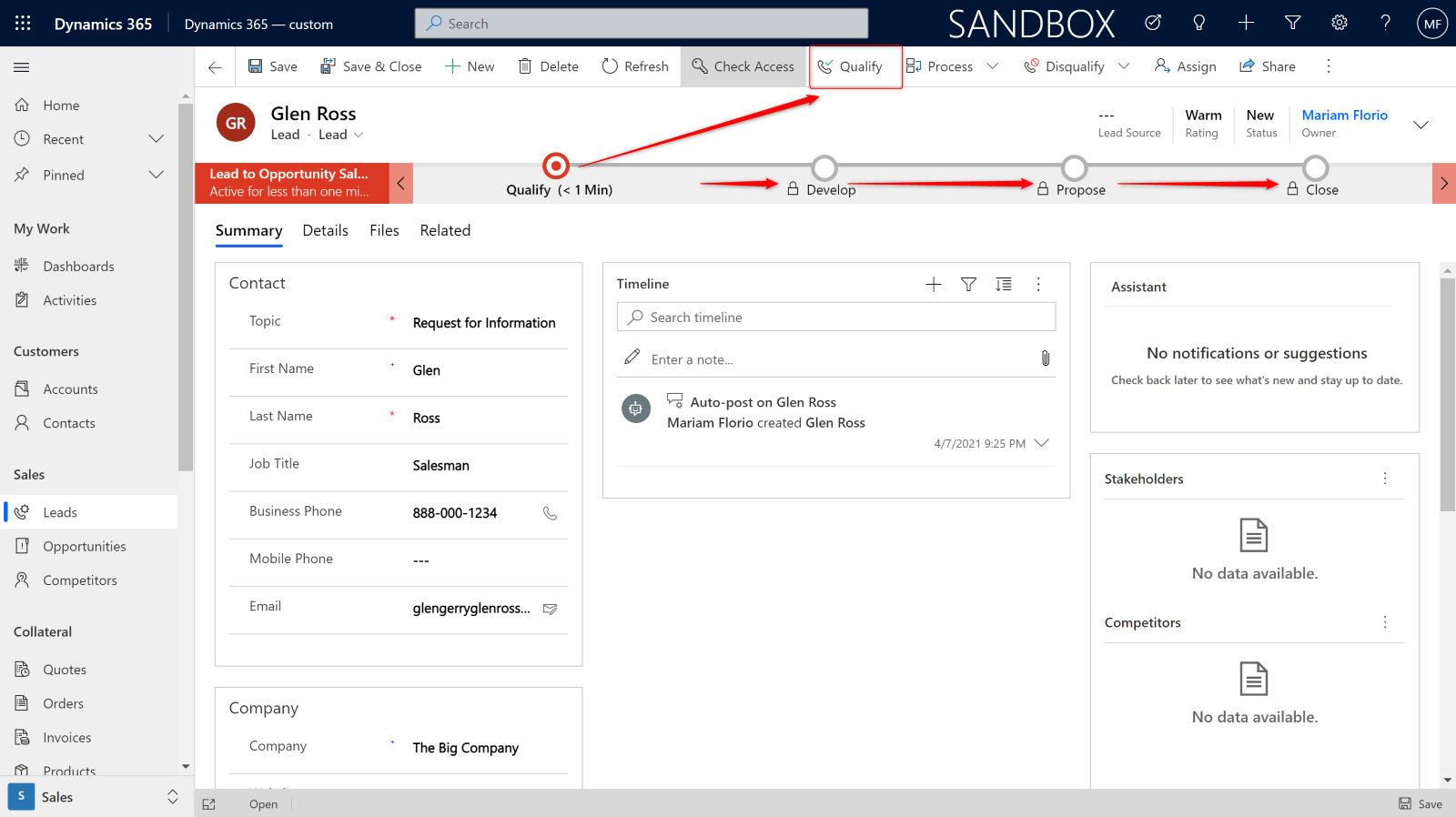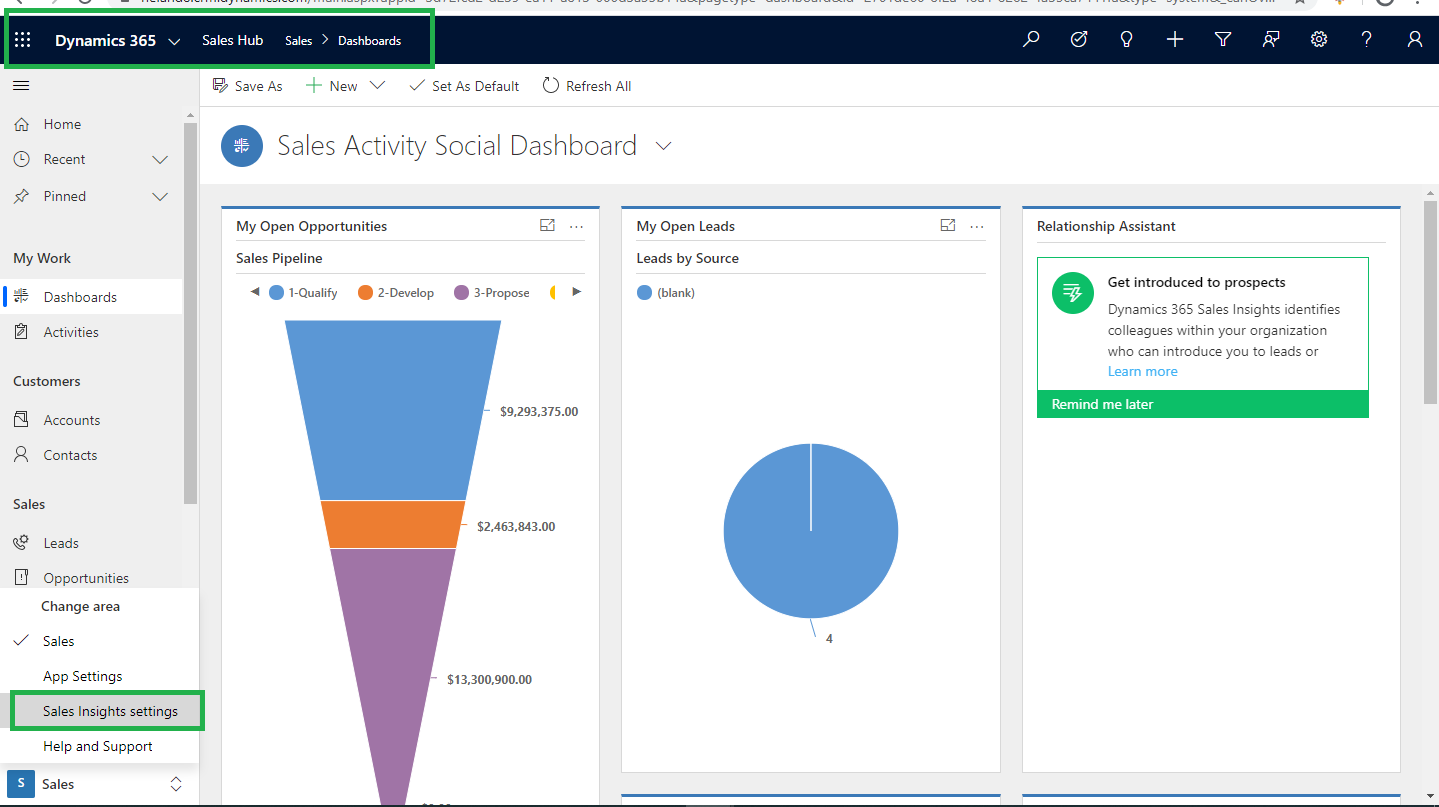You should start by opening the Accounts/Contacts screen to enter customer information: company name, address, industry, contact information. Then, go to the Opportunities screen to create an opportunity with an estimated value, sales stage, and related tasks.


4At every step, use the Activity Timeline to track activities (calls, emails, reminders). This gives the sales team an overview of the customer relationship.

Use the “Sales Pipeline” dashboard to see the distribution of opportunities by stage — helping to quickly spot “bottlenecks” and adjust strategies.
Additionally, make sure you set up the right security roles and access permissions: only sales people can create new opportunities, and marketing can only view them. This ensures that customer data is properly managed.
Conclusion: Actively managing leads → contacts → opportunities in Dynamics 365 will optimize your sales process and help you not miss any opportunities.















